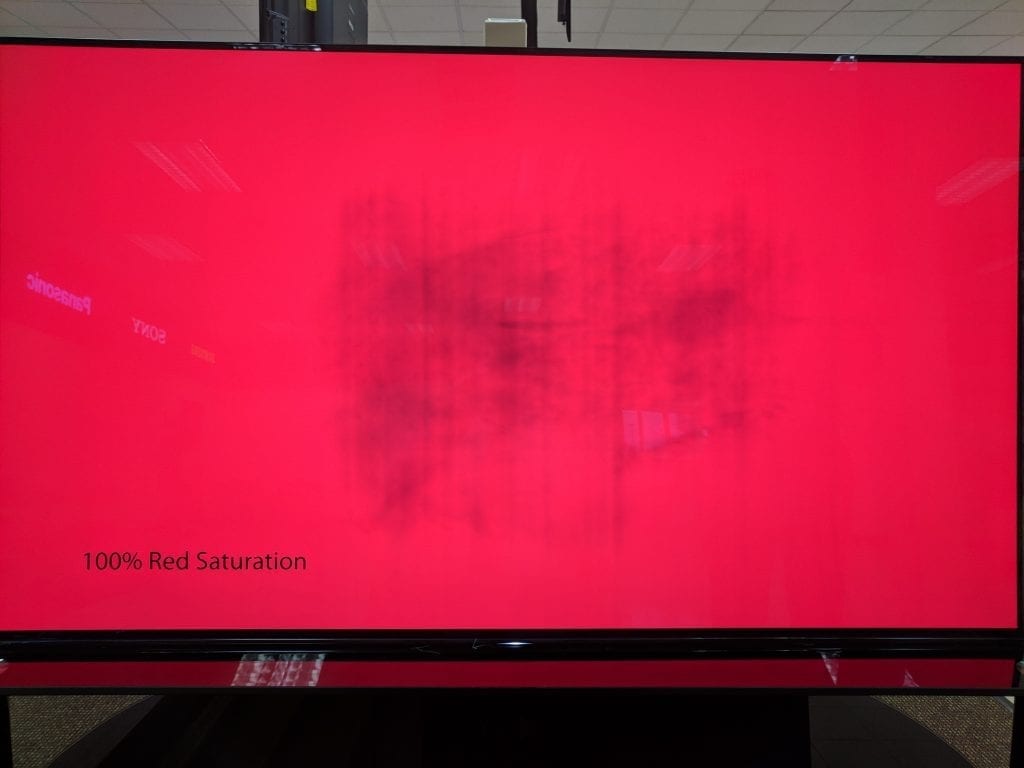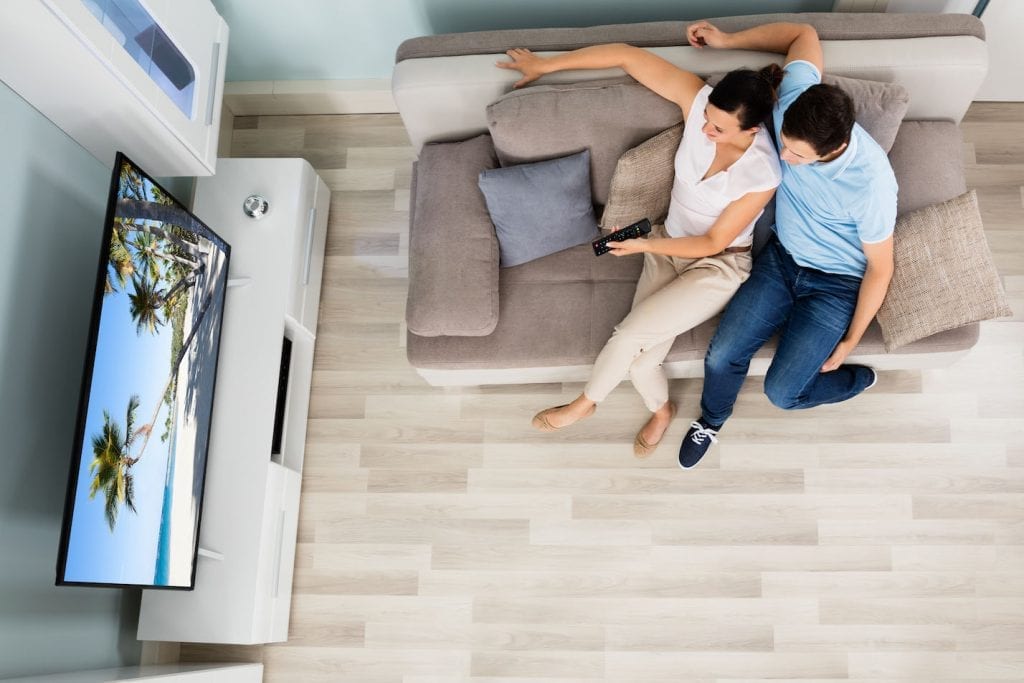Black Friday is almost upon us. A slew of tantalising (and often exaggerated) top tech deals are infecting every corner of our web browsing experience.
So is this the time to fork out your hard-won cash on everyone’s favourite new telly tech, OLED, to compliment your impressive collection of consoles? No. Seriously, I mean it. NO.
Before we get into the reasons why let’s clear something up. I’m speaking from the point of view of a regular consumer, just like you. I’m not sponsored by or in cahoots with any brand to promote their technology. I don’t have a review copy of a rival TV or am being paid to say all this. I’m telling you my honest thoughts – the thoughts of a man who has since the spring of 2015 changed his living room telly 7 times. I’m not mad – well maybe a little – but just determined to find the perfect set.
If you’re overly familiar with TVs you’ll know that OLED is seen as the best of the technologies currently available – the biggest seller in the high-end telly market for at least the last couple of years, it’s also found in most top of the range smart phones.
To quickly sum up why, it’s mostly to do with the pixels being self-emissive. This means each pixel emits its own light, therefore allowing the most precise control of light output you can get – anywhere from brightest white to inky black when the pixel light is completely turned off. This results in a perfect contrast ratio, the biggest factor in determining our perception of picture quality.
![]()
LCD TVs (which includes QLEDs by the way, they’re just LCDs with a quantum dot layer) are transmissive displays, meaning they require a row of LEDs to light the pixels – typically mounted along the bottom of the screen or on higher end models behind it in individually controlled dimming zones they call Full Array Local Dimming (FALD).
Think of an LCD’s light output like shining a torch through a stained-glass window – a cheaper set will have a line of torches at the bottom of the window shining up across the vertical axis, which is not precise in directing light to a specific area as it creates a column of light, contaminating areas of the picture where it’s not needed and stopping it from producing focused highlights – unlike a more expensive LCD with FALD technology, that has many more smaller torches directly behind the window shining directly out, giving you a focused light output which results in a far better contrast and therefore perceptibly better picture.
But despite these FALD benefits and some extremely clever software trickery in minimising unwanted light leakage around the targeted pixels in that zone, the approach is still inferior to the precision of OLED. The highest number of dimming zones you’ll get on a high end LCD/QLED with FALD is about 600. A long way short of the 8 million completely independently dimmable pixels an OLED has!
But wait! before you rush out and buy an OLED, there’s a catch. A big one. Let me tell you about ‘burn in’.
OLEDs are susceptible to the twin phenomena of image retention and burn in. The organic compounds in an Organic Light Emitting Diode (OLED) degrade as they’re used, causing the pixels to slowly go dimmer with extended use. If the image on screen is at a low brightness level in Standard Dynamic Range (SDR for short) like all TV broadcasts and most content on demand, as long as the scene is constantly changing it’s not likely to cause a problem, as the pixels will degrade at a very even rate.
If however you watch a lot of content with static images, such as news channels with static logos or, and this is where it gets relevant here, HUDs in games especially in the far brighter High Dynamic Range (HDR) those pixels emitting that area will degrade faster than the rest of the screen, causing image retention – a ghosting effect that shows a faint image of that HUD or logo visible even when you’re watching something else entirely.
Fortunately, OLED TVs have software compensation cycles that refresh the pixels to eliminate minor image retention issues – something I can confirm they are quite effective at doing, at least at first.
The problem is the more you use an OLED the more susceptible it becomes to image retention and permanent burn in – a ghosted image that cannot be fixed no matter how many times you run the clean-up tool.
I had an LG C7 OLED TV for just over a year before I had to sell it at a massively knocked down price due to permanent screen burn in. The issue came completely out of the blue and didn’t even resemble any visible outline of content I had been watching (see a picture example of it below).

As you can see, it ruins your viewing experience.
Worst of all burn in is not covered by any standard warranty, so unless you’ve purchased expensive additional insurance to cover the possibility, you’re stuck with the problem and massively out of pocket should you choose to sell it on.
So it simply isn’t worth the risk if you’re a gamer who likes to spend your evening hours playing your favourite titles.
How likely is it you’ll experience burn in? Far more likely than most retailers and reviewers are letting on
An article on AVS Forum conducted a poll of users and concluded that up to 15% of OLED owners have experienced permanent burn in – that might not seem like a massive percentage but if you put it in context with other technology products and the expensive price of these sets, it’s far too high a number to feel comfortable with.
Worst of all, there seems no way to predict whether you will get permanent burn in or not. It’s very panel dependent, so you may get lucky. Regardless, the longer you own an OLED the more likely it becomes.
Thankfully high-end LCD/QLED TVs are effectively immune to burn in (Samsung even boasts a 10 year burn in warranty) and have contrast performance that is 90% as good in most scenarios, as long as they’re the directly backlit (FALD) variety – so a completely safe and good quality choice no matter how many hours you spend murdering in CoD or kicking people in FIFA.

What about other image quality factors?
OLEDs boast much wider viewing angles than the most common LCD panel type used in TV screens (Vertical Alignment – VA), so if you like to sit at an angle while gaming OLED would have a noticeable upside (I suspect most of us sit pretty straight on when we’re gaming though).
OLEDs also reproduce small very bright highlights with incredible precision due to their self emissive tech – which looks great in HDR. However they do suffer with a severe lack of overall screen brightness for HDR content due to their ABL (Automatic Brightness Limiter) circuitry designed to combat burn in, which kicks in when large areas of the screen are lit up.
Conversely, LCDs can get up to 4 times brighter on areas that take up 50% or more of the screen area – so HDR games, especially ones that feature a lot of snow or bright blue skies for example, look far more realistic and impactful.
So there you have it, take it from a man who has owned 7 4K tellys in just the last 3 years – including two OLEDs – for anyone who plays games regularly, especially in HDR, OLED is just not worth the risk. Unless you really do have money to burn…



